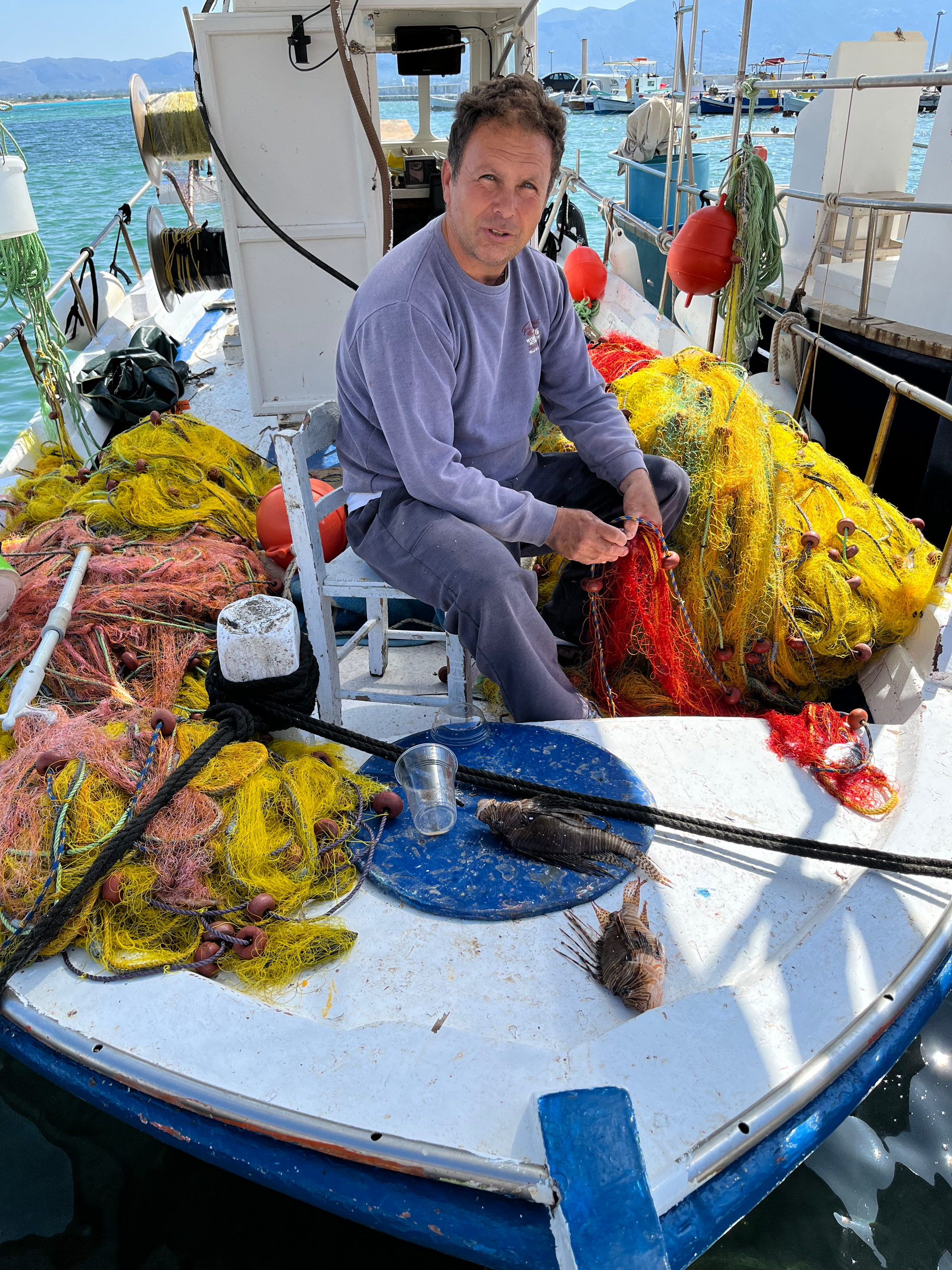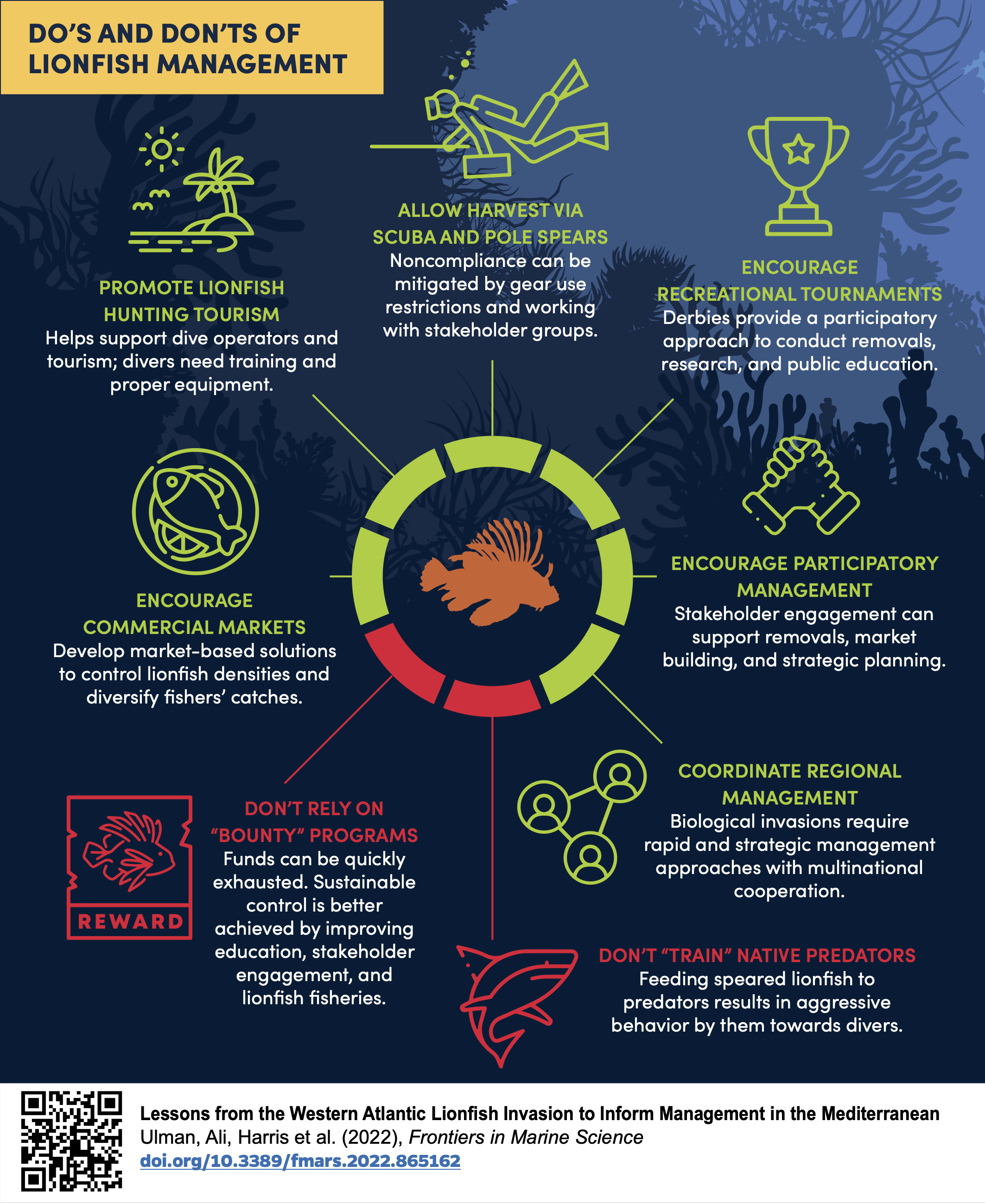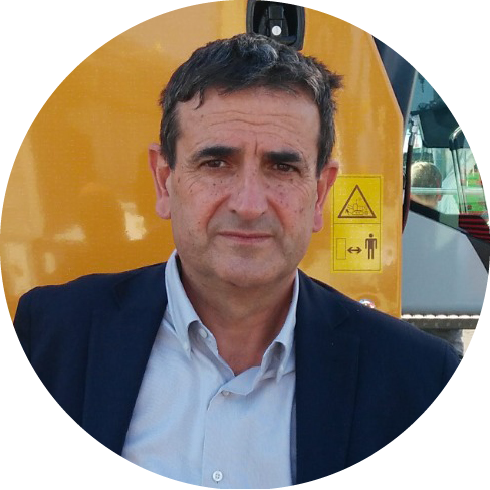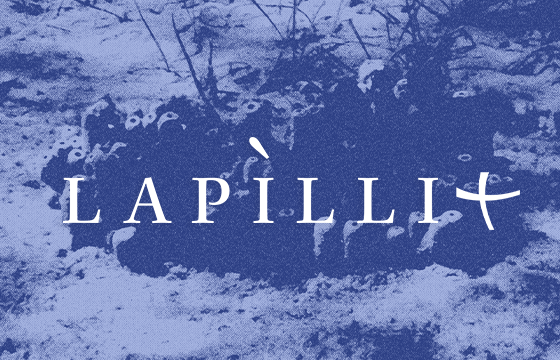We are excited to share this very first issue of Lapilli+ with you. You probably signed up to receive Lapilli a long time ago, but since Lapilli is only in Italian for now we invite you to subscribe to this brand new newsletter—Lapilli+. It’s also monthly. But instead of a selection of news, features, and reports, Lapilli+ brings interviews, fact sheets, and dispatches directly to your inbox. Differently from Lapilli, we ask for a small contribution (please see Lapilli+ plan on our website, and select which emails you want to receive). If you are interested but can’t afford it, just let us know. We will be happy to offer a complimentary subscription for a limited time. In this issue, you will find an interview with the head of the local geologists’ organization, Paride Antolini, on the flooding that hit Emilia Romagna about a month ago. We also look at the expansion of lionfish (Pterois miles) in the Mediterranean Sea. Some weeks ago, a scientific publication confirmed the first sighting of this exotic species in the Alboran Sea, off of Spain, at Gibraltar’s doorstep. The first record of the lionfish in the Mediterranean dates back to 1991, when it was spotted off the coast of Israel. But its rapid advancement began two decades later, with a pair captured off the coast of Lebanon in 2012. We spoke with Jason Hall-Spencer, professor of Marine Biology at Plymouth University (UK), about ways to tackle the rapid spread of this non-native tropical fish to the Mediterranean. You will soon find an entire series on Magma’s website about the new inhabitants of our sea. (To receive our stories via email, activate "Magma EN" in the email preferences of your account.)

What to Do with the Lionfish. I met Jason Hall-Spencer on Elafonisos, a small island south of the Peloponnese, in Greece. He had been invited to Elafonisos Eco Week to present a guide on lionfish management in the Mediterranean that he co-authored with Periklis Kleitou based on research they conducted in Cyprus for the RelionMed project.

In the waters surrounding this 7-square-mile (18-square-kilometer) island, the lionfish appeared about five years ago. Matteo Cavessi, who splits his time between his hometown of Rimini, Italy, and the Greek island, was among the first to notice it. The next year, he counted four or five. Now they’re everywhere, he says, and they eat the young of other species. Cavessi goes after them by spearfishing. But also, walking along the shore, it’s not hard to spot brightly colored fish aboard some of the fishing boats. They have spikes all over, and from afar they vaguely resemble the Mediterranean scorpionfish. During Elafonisos Eco Week, Cavessi made a carpaccio and a soup out of them, hoping to spark the locals’ curiosity and start seeing them served in the island’s restaurants.
His actions align with the guide’s suggestion to reduce the threats posed by this new species. But the lionfish are not the only exotic fish expanding in the Med. In Elafonisos, around the fishing boats, you can also see floating rabbitfish, the "German" as they are called around here, and several small silver-cheeked toadfish. "Those are the worst," according to the fishermen. "Not even the seagulls eat them." They are toxic, and with their teeth, they damage the nets and ruin the catch. In recent years, as we will see on Magma’s website (or via email if you like), these exotic creatures that have reached the Mediterranean through the Suez Canal have increasingly spread with the complicity of warming waters.

Can you describe the lionfish?
It's in the family Scorpaenidae, which is a group of fish that are very well protected with spines. And this one actually has venomous spines, so it can give you a very painful sting. I've heard people say it's twenty times stronger than a bee sting. It's an incredible fish. It looks beautiful, actually. But the problem is that it doesn't belong in the Mediterranean. It should be in the Red Sea and the Pacific Ocean basin. About twenty years ago or maybe longer, they started to invade the Caribbean because people released some from aquariums off of Florida. In that region, they're known to be one of the most ecologically damaging invasive species ever recorded because they eat the types of fish that would otherwise eat algae. The coral reefs around the Caribbean and Florida are already in a bad state because of global warming and pollution. But now, on top of that, the fish that would normally eat the algae aren't there. So the algae are starting to destroy the coral reefs. Now, we're not at the stage where we know what's happening in the Mediterranean ecologically, except that these fish are eating all sorts of little fish that would normally be food for the commercial species that are local. So the concern is—and it's a real concern—that the population explosion of lionfish is causing immense environmental damage to the fisheries of the region. I've seen it myself in Cyprus, and the people we were talking to this week are seeing the same in Greece.
So you are encouraging people to remove as many lionfish as possible, but what is the goal of removing lionfish?
We saw a few rare single lionfish in Cyprus in 2016. Then the next year we saw more. They were starting to form pairs. So we thought, "Oh, this is a serious problem or could become a serious problem.” We applied for money to attempt to eradicate them. The point, at that time, was to try to quickly kill as many as possible in order to prevent them from reproducing and spreading. It became really clear, though, by the time we got the money, which was in 2017, that eradication was going to be totally impossible because they had started to spread so fast and so far. And our genetic work—we did genetics to find out about the population—said that they were much more diverse genetically than the ones in the Caribbean and Florida. And the reason for that is that instead of just being a few fish released from aquariums, there were lots of fish coming through into the Mediterranean. We put two and two together and realized that because the Suez Canal has recently been widened and deepened, there's now no biosecurity control on the fish coming through from the Red Sea into the Mediterranean. So now it's a case of damage control. We focused our efforts on—instead of trying to kill all the lionfish, because that would be impossible—picking marine protected areas. And we worked with fisheries authorities and said, "Can we please get a special scientific license to use scuba diving equipment to try to clean the marine protected areas?" And so that was our focus: to try to reduce populations in protected areas.
Part of this strategy also involves creating a market for consumption of this species. And to create a market, you need a constant flow of the product. But in this case, ideally, if the population gets reduced, it's difficult to ensure such a constant flow…
My aim is to try to control the population rather than set up a sustainable fishery for the species. If there was a sustainable fishery for the species then, by definition, that would mean that the fish have to have a healthy population to constantly supply a market. There are situations around the planet where invasive species have become the target of commercial fisheries. But of course, they are themselves ecologically damaging and problematic for the local populations. Anyway, we decided to try to copy and learn from the Caribbean experience. They believe that if you've got a market for the organism, then that would encourage people to overfish it and crash the population. So, I'm torn. I don't think we should be aiming for a sustainable lionfish fishery. We should be aiming for an unsustainable one that overfishes the population and tries to remove it. That might be unrealistic, though. So certainly in protected areas, I think these culling events are a really good idea. The fish can be consumed by the people who are involved in the culling. Maybe, instead, we shouldn’t set up a sustainable chain that feeds into supermarkets.

In the guide, you also mention a natural option. What is it exactly?
Marine protected areas have shown all over the world that if they are managed effectively—by which I mean actually protected rather than just on paper—then marine life comes back really quickly and really well, and you start getting bigger fish. The types of fish that are the predators of lionfish, like groupers and sharks, come back, if you protect the seabed and remove fishing activity. So that would be the best option based on rebuilding stocks of lionfish predators. But you have to be careful with these marine protected areas that could become infested with invasive species because, in that case, they would become breeding grounds for invasive species. If no fishing is allowed at all, then the lionfish will proliferate and proliferate and eat the native fish. So what's needed is a network of marine protected areas that are managed in such a way that fishing is allowed for lionfish.
Lionfish are just one of the many exotic species that are entering the Mediterranean. Should we address each of these species individually, or can we address them all together?
There's another fish called a silver-cheeked toadfish, which is also known as a puffer fish, that's become a pest—a real pest—in Cyprus. The fishermen don't like it because it eats the other fish in the nets. And the trouble is that you can't treat it the same as lionfish because it's actually poisonous. People can die if they eat it. So obviously, you need to treat the different invasive species that are coming through the Suez Canal in different ways because some, like the silver-cheeked toadfish, will never be targets of a commercial fishery.
Based on your research areas, what do you think are the biggest challenges that the Mediterranean is currently facing in terms of biodiversity?
The biggest one is overfishing, as it has been for decades. Things like climate change, ocean acidification, or coastal pollution are much lower-order problems than you sometimes get through the media. Systematically hunting life in the sea to feed the growing human population is clearly the biggest effect we see on marine life. If you watch Cousteau's films from the Mediterranean that were filmed in the 1950s, the big difference between then and now is the loss of abundant large fish. When you go diving in exactly the same locations, and I've done this, all you see are small fish, not big ones. It's a problem called ‘shifting baselines’, whereby people who go in the sea now think what they're seeing is normal, but it's completely abnormal. It's like a desert compared to what it should be in terms of the biomass and abundance of fish.
How did you become a marine biologist, and what was your first experience with the Mediterranean?
I grew up by the sea and, although my family didn't have much money, we spent most days in the summer on the seashore because it was on our doorstep. I've always liked putting my head in rock pools and looking around. I was pretty heavily influenced by my dad, who enjoyed scuba diving in the 1950s and 1960s, as one of the first generations to be doing this in the UK. He took me for my first dive off near Saint Tropez, in France, when I was about 14. I thought, "Wow, this is amazing. I want to do more of this.” And then I was looking at which university to go to. There was only one in the UK at the time that offered diving as part of the degree, so I did that. I probably went on too many dives and not enough lectures, but I learned a lot. It brought the textbooks to life. So my first experience in the Mediterranean was when I was very young. But then, after I did a PhD, which I did on seaweeds, my first postdoc—as they call the first job after a PhD—was a European project that had partners in Scotland, in Brittany in France, in Vigo in Spain, but also in Alicante in Spain and in Malta. And part of my job was to go to these countries and put camera equipment on fishing gear. The fishermen were really impressed because they had never seen their gear in action on the seabed. And because of that, I learned quite a lot about the Mediterranean. And we published studies saying, "Well, this is the impact of different types of fishing gear in Malta, different types of fishing gear off Alicante…”
During your presentation in Elafonisos, you mentioned that the lionfish may reach as far as the Gibraltar Strait, and you said to pay particular attention to the Sicily Channel. Do you have any recommendations for Italy?
We did some modeling to try to work out how far the lionfish will spread, given that the Mediterranean is warming—it's one of the fastest-warming places on the planet. We made these models to try to say to governments, to politicians, and to fishing authorities how far the fish will reach by 2050. And it looked like it would spread all along the north coast of Africa, all the way to Morocco, as well as to the Adriatic, all around Croatia, up to Venice, and so forth. But the prediction that we published in our report last year is already proving to be incorrect, because the fish are moving faster than we could predict. And that makes me think that they could probably get through the Strait of Messina because they've been sighted on the south coast of Sicily. They've been seen at Cape Bon off of Tunisia. And actually—I know myself, I was there in January—they’re becoming quite common at Cape Bon. So that's really close to breaching the bottleneck between the Eastern and Western Mediterranean. And if they get through, now I'm convinced, in fact, they can just spread up the coast of Italy, into the coast of France, the coast of Spain, and probably out through the Strait of Gibraltar and into the warm parts of the Atlantic.
So what should we do?
I think preparing is the best way. What's needed are changes in the law, because at the moment you cannot spearfish with scuba equipment. Unless people are trained and prepared, lionfish is going to become a pest and a real damaging fish invasion all around the coast of Italy, which will clearly impact fishermen, livelihoods, and even the whole food chain from mollusks to humans. It’s too late to stop the Mediterranean lionfish invasion. But authorities need to act urgently to fix the Suez Canal biosecurity problem, otherwise there will be wave upon wave of problems.
When I stopped recording, Hall-Spencer recalled a recent study published by professor Marco Milazzo from the University of Palermo, among others. By analyzing water from 30 Mediterranean fishing ports with a methodology known as environmental DNA, the group of scientists detected the presence of exotic species even in areas far from their known invasion range. Such a tool could be used to track an alien species before it becomes too spread, he added.


The Memory of Water. In the aftermath of the flooding events in Emilia Romagna, I spoke with the president of the Emilia Romagna geologists’ professional organization about the relationship between human settlements and water, as the latter continually takes back what is taken from it.

You said that water has a memory of its own. What do you mean?
Water has a memory, and retains it over centuries and millennia. Water tends to go where it wants to, where it’s easier, and where the morphology of the land leads it. Water knows where it has to go. But we always force it to go somewhere else.
What is the memory of water in Emilia Romagna?
Across centuries, we have always directed water where we wanted. We could even say we found a certain balance. Through land reclamation consortia and quite ingenious engineering works, we have managed to channel shallow waters, those that form swamps and do not drain naturally, into elevated canals and, from there, into the Rhine and then the sea. But an accident may always occur: a record rainfall, a levee breaking. And the balance shifts. Flooding is a problem we've been dealing with for 2,000 years, and we're going to continue encountering it even when we have all the expansion tanks, all the reservoirs, and everything we want. A situation with zero vulnerabilities simply doesn't exist.
Does this mean that the water does what it wants?
In Roman times, the Po river flowed near Ravenna, which had been the capital of the Western Roman Empire for a while. Then the river moved further and further north near Chioggia, on the border with Veneto where it flows today. The Po went through this geological evolution, as did all its tributaries. So every century there have been incredible upheavals in the plains: rivers overflowing, changing course, and then being diverted by the Venetian Republic or the Este family first and the papacy later. An incredible struggle took place to wrest those marshes from the water and reclaim the land that was necessary for humans to live on.
Because of the levees and land reclamation schemes, have we forgotten that these are still flood plains?
If an area is more prone to certain issues, people evidently get used to building in a certain way. Look at the archaeological remains in the area. The earliest settlements were huts on stilts, as those areas flooded from time to time. Back then, there were no levees. So the whole countryside would flood, houses would be on wooden stilts, the water would run underneath, and people would live on top.
Since the end of the Second World War, in Emilia Romagna and throughout Italy, we have experienced an intense engineering development, and we have avoided many floods. There was one in Polesine, but that was in a rural area of the Veneto region, far from the big cities, where those who do the planning live. That made us think that these flooding events could no longer happen.
The water preserved the memory, while we...
We, on the other hand, have lost our memory of it. This intense development has made us lose the ability to live in this area, and we would rather tame it.
If we go to Ravenna, we’ll see all these huge industrial areas. They are basins where the water now stagnates. They are immense basins, almost at the same level as the sea, so draining the water is very complicated. When those buildings were conceived—these areas, let's say artisanal, industrial, etc.—not even that long ago, in the past twenty years or so, evidently people thought that the current water regimentation was normal, something suitable for the environment in which we lived. But that's clearly not the case. And we have to take it into account. In certain areas, in the last few years, natural river rolling areas have been taken away to make agricultural fields.
Do we basically have to give back to the water what has been taken from it?
Yes, but it is not that simple. A few years ago, I was in charge of planning a lamination area, which is an area that is submerged when the river floods but otherwise remains usable for crops. We do all the planning, and the municipality approves it. Then, when the project was taken to the borough, the residents objected due to the excessive noise that truck traffic would bring. And it’s full of such cases. No one wants infrastructure work in their backyard. And every time work has to be done for the common good, some resistance is encountered.
However, when it comes to getting building permits to expand a shed, the story changes...
Of course, you go to the city council, and if you don't get a permit, you go to the mayor or the technical office, and you make all the rounds of the parishes to get the permit. Maybe they don't give you permission to expand the house but they give you permission to make a tool shed or an agricultural shed. Then what do you do? You convert that agricultural shed, and maybe it becomes an office. We forget that we have contributed a lot to building and cementing these lands.
So how can we continue to live in floodplains and avoid losing our memory between one flood and another?
If there is a flood problem in an area, you have to build thinking that in that area something can happen; there can be flooding. Even now, in certain situations, you build a little higher, but only by half a meter. If you want to build in certain areas, at least for new houses, let's require higher elevations. It shouldn’t be that absurd to think about this. It’s incomprehensible why, in certain municipalities, the building code continues to allow the construction of basements. Why is it that in cities like Cervia there are proposals to build underground parking lots, a few dozen meters from the sea, when we know about problems with subsidence, problems with sea level rising, and problems with rising storm surges—and these storms are getting stronger and stronger. Why did we even come up with the idea of underground parking near the sea?
Same with materials. You have to build houses with structures that, if they flood, can react. If you want to continue to live on that plain, this is fundamental.
And remember that water does not forget…
If we all of a sudden removed all the levees, the water would still find its way. It would know where to go. Of course, the problem is that we would stop living in these areas. That's it.

The interviews have been slightly edited for length and clarity.
That's it for this month. Thank you for reading this far. See you in July.
If this newsletter was forwarded to you, you can subscribe here to continue receiving it. We put a lot of time and love into making Lapilli+, so we think it’s fair to ask less than the cost of a coffee for it. Please, switch to the Lapilli+ plan here. Thank you!
Lapilli+ is a monthly newsletter with original content about the Mediterranean and its environment curated by Magma. Here you can read Magma's manifesto.

